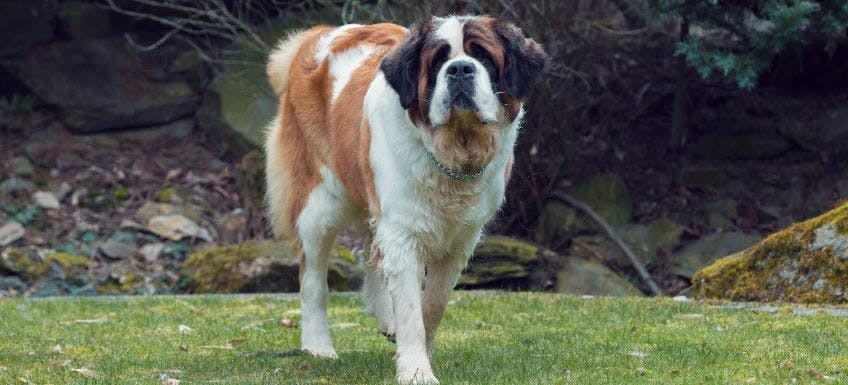
St Bernard
Suited For Cold Weather
Sociable
Protective
For Experienced Owners
Breed Snapshot
- Weight: 64-120 kg
- Height: 70-90 cm
- Breed Size: Large
- Lifespan: 8-10 years
- Dog Breed Group: Working
- Coat Type: Thick, dense double coat
Description
The St Bernard, a colossal and formidable breed of dog, boasts an imposing physique and Herculean strength. Their sturdy build, complete with a wide head, sagging ears, and a dense coat of fur, typically showcases patches of red, mahogany, or brindle on a pristine white backdrop. Originating in the Swiss Alps, St Bernards were initially bred by monks to assist in their search and rescue operations. They were christened after the St Bernard Pass, a treacherous mountain passage that the monks and their dogs bravely crossed.
Characteristics
Recognised for their tender and loving nature, St Bernards make excellent family companions. Moreover, their intelligence and loyalty make them the perfect candidates for search and rescue missions. However, their stubbornness and determination may necessitate a strict and unwavering training methodology.
Health Problems
St Bernards are highly susceptible to several health complications, including hip and elbow dysplasia, bloat, and heart conditions. Their thick coat predisposes them to skin allergies and ear infections as well.
Exercise
While their mammoth size might suggest otherwise, St Bernards do not require excessive exercise. Regular walks and secure yard playtime are adequate to keep them content. However, caution should be exercised, and they must always be on a leash or within a fenced area as they are prone to wandering.
Grooming
Grooming is vital for St Bernards, given their thick double coat. Routine brushing can prevent matting and shedding, while periodic bathing and nail trimming can help maintain their overall hygiene and appearance.
Living Environment
St Bernards thrive in a home with a vast yard or outdoor space, with a preference for cooler climates. However, they can adapt to warmer environments if they have access to ample shade and water.